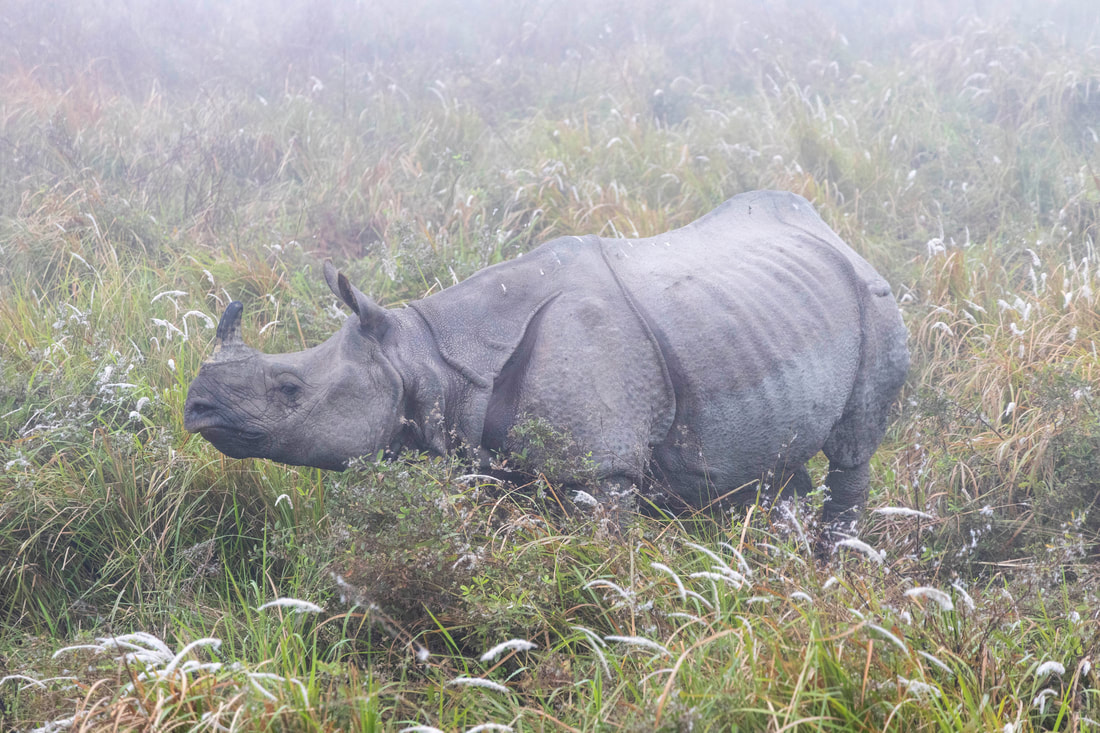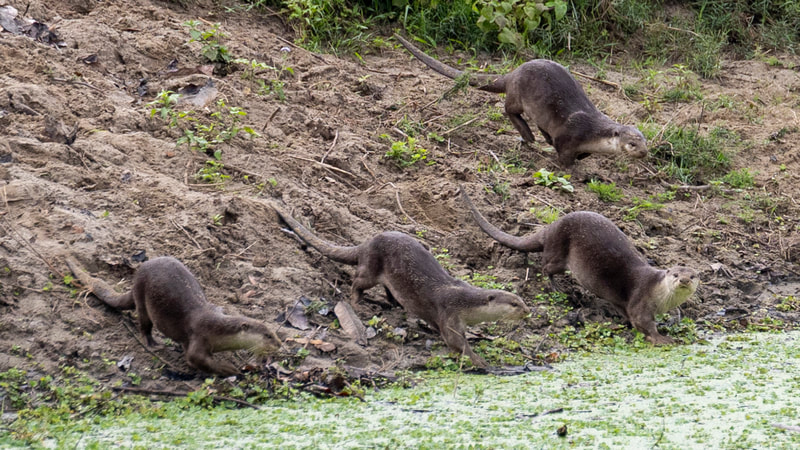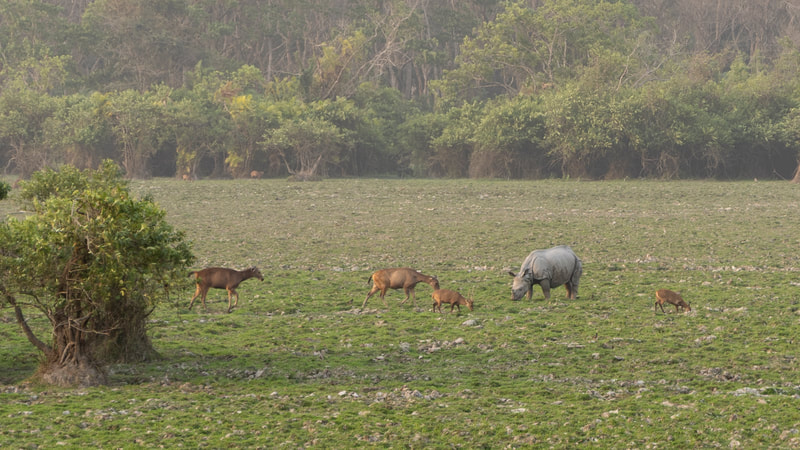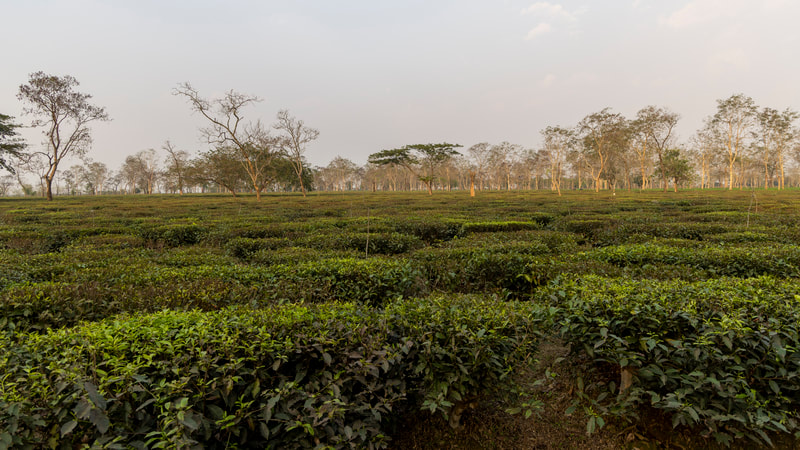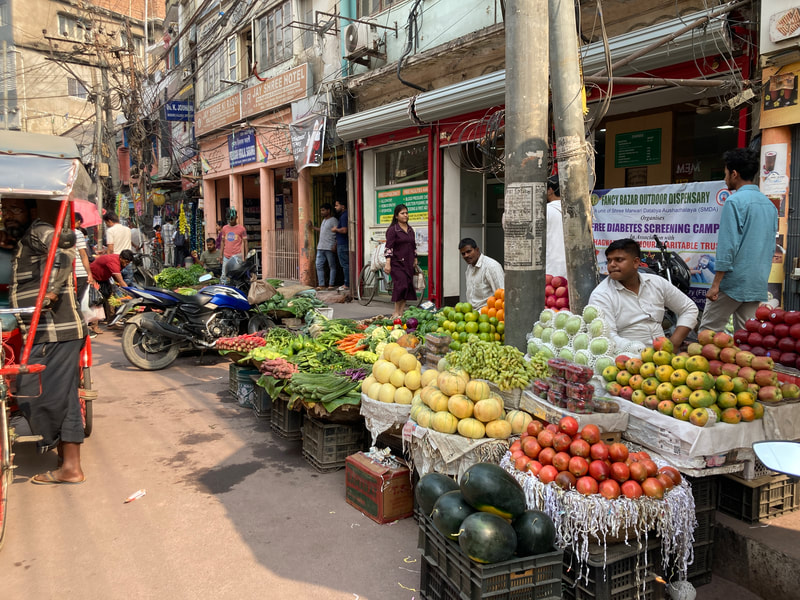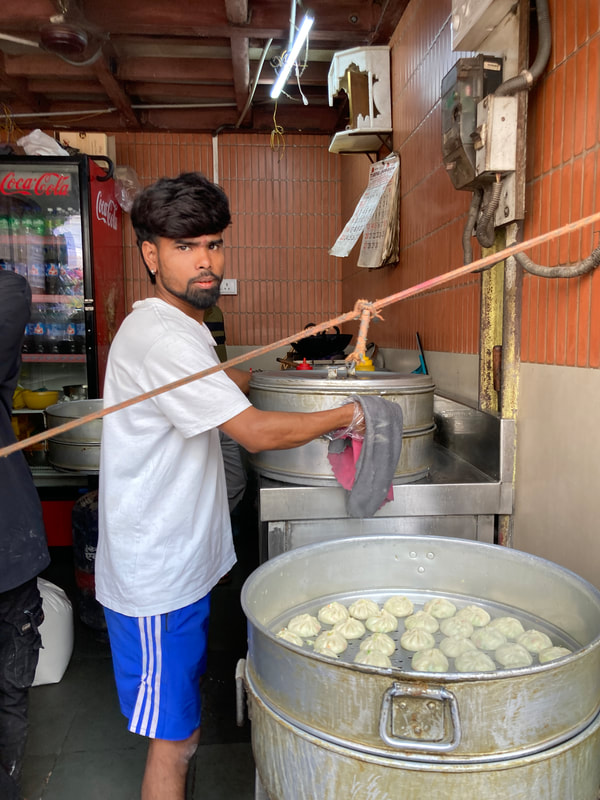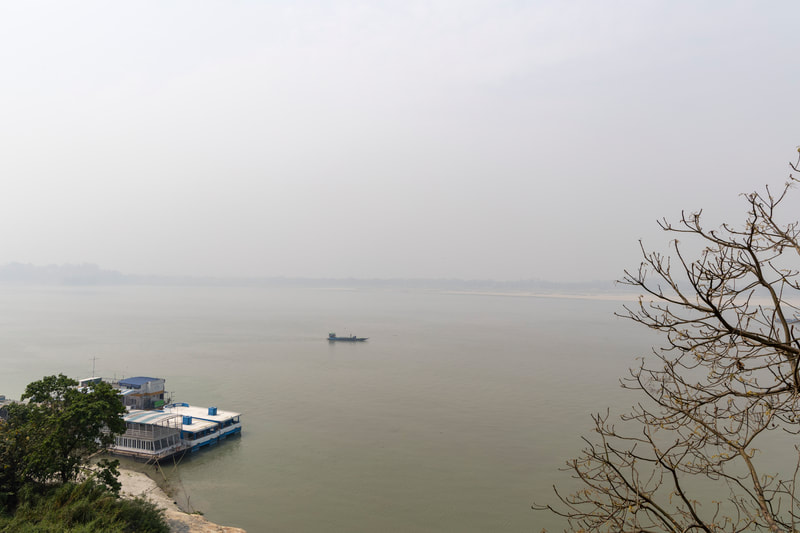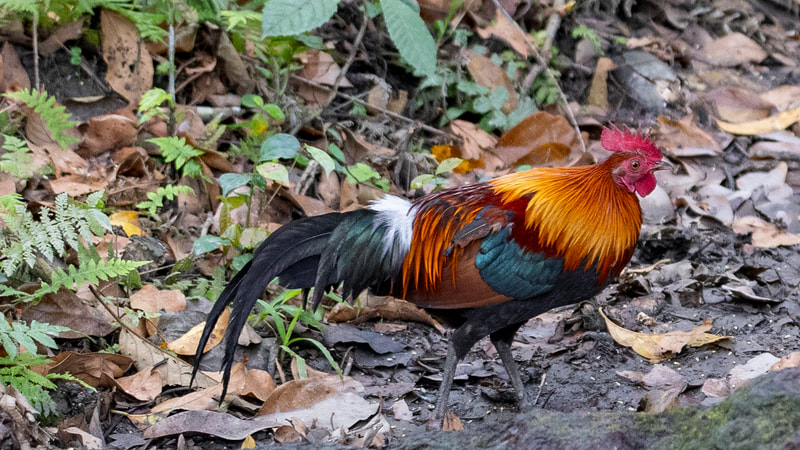|
The Assam Tourist page is called "Awesome Assam" Wir haben Ferien und starten in Assam. Die ersten Tage übernachten wir beim Kaziranga Nationalpark. Wir machen dort zuerst eine Jeep-Safari und am nächsten frühen Morgen (um 5 Uhr) gehen wir ein zweites Mal hin, auf einem Elefanten. Beide Male staunen wir, wie viele Tiere wir sehen: einhörnige Rhinozerosse (die gibt es nur hier, glaube ich), eine Fischotterfamilie, viele Hirsche und Rehe, einen Leguan, Wildschweine, Büffel, Schildkröten. Beim Elefantenritt kommen wir ganz nah an die wilden Tiere; die Rhinos lassen sich überhaupt nicht von uns stören. Danach machen wir mehrere Ausflüge, die leider nicht alle erfolgreich sind. So fahren wir zu einem Teeforschungszentrum in der Meinung, dass es dort ein Museum oder sonst Erklärungen über Tee gibt. Es ist aber nur ein Forschungszentrum, es gibt nichts für «einfache» Touristen wie uns. Wir buchen auch eine Bootsfahrt auf dem Brahmaputra, um Flussdelphine zu beobachten. Beim Ort, wo wir jemanden treffen sollten, kommt keiner. Ein einheimischer junger Mann führt uns zu einem Boot, der Wind ist aber so stark, dass der Bootsführer nicht rausfährt. Ehrlich gesagt, bin ich erleichtert, wenn auch etwas frustriert. Am Abend nach diesem missglückten Ausflug besuchen wir eine assamesische, traditionelle Tanz- und Musikshow gleich neben unserem Hotel. Das ist sehr spannend. Die Musiker*innen und Tänzer*innen sind beeindruckend. Was für eine Energie in dieser Darstellung! Anschliessend fahren wir nach Guwahati, der Hauptstadt von Assam. Wir besuchen den bekannten Tempel – und finden wieder den gebuchten Reiseführer nicht, sind also nochmals betrogen worden; diesmal haben wir im Voraus bezahlt – zum Glück nicht viel. Für uns ist diese Tempelumgebung sehr fremd und merkwürdig, schwierig ohne Erklärungen. Danach fahren wir zum «Brahmaputra Heritage Centre». Da steht ein alter englischer Bungalow, die Anlage ist wunderschön neu gemacht. Wir erfahren viel über diesen grossen Fluss, die Umgebung und die Menschen und haben eine tolle Aussicht auf den «mighty Brahmaputra» (den mächtigen Brahmaputra). Dann gehen wir zu einem der vielen Märkte – Guwahati ist (gefühlt) ein grosser Marktplatz und zum Teil fühlen wir uns um hundert Jahre zurückversetzt. Es macht uns auf jeden Fall Spass und wir gönnen uns etwas Streetfood. Wir kaufen noch ein wenig ein und trinken in unserem Hotel wunderbaren Tee und essen abends in einem einfachen Restaurant assamesisches Thali; veg für mich und non-veg für Yashi. Das heisst, dass er einfach noch mehr Essen bekommt, mit Fisch und Fleisch. Am nächsten Tag entdecken wir das Assam State Museum. Das ist sehr interessant mit Götter-Statuen die zum Teil aus dem 9. Jahrhundert stammen. Bei einigen stehen Erklärungen dabei, so dass wir endlich etwas mehr Einblick in die hinduistische Welt erhalten. Nachmittags nehmen wir die Bahn nach Siliguri. Der Zug heisst Vande Bharat. Es ist ein Schnellzug und da wir die teuerste Kategorie gebucht haben, ist die Fahrt sehr bequem: viel Platz und wir bekommen viel Essen 😄 – Tee mit Snacks und danach Abendessen. We are on holiday and start in Assam. We spend the first few days at Kaziranga National Park. We first go on a jeep safari there and the next early morning (at 5am) we go there a second time, on an elephant. Both times we are amazed at how many animals we see: one-horned rhinoceroses (they only exist here, I think), a family of otters, lots of deers, an iguana, wild boars, buffaloes and tortoises. On the elephant ride we get very close to the wild animals; the rhinos don't feel disturbed at all. We then go on several excursions, which are unfortunately not all successful. We drive to a tea research centre in the belief that there will be a museum or other explanations about tea. But it is only a research centre, there is nothing for ‘simple’ tourists like us. We also book a boat trip on the Brahmaputra to watch river dolphins. No one turns up at the place where we are supposed to meet someone. A local young man leads us to a boat, but the wind is so strong that the boatman doesn't go out. To be honest, I'm relieved, if a little frustrated. In the evening after this unsuccessful excursion, we attend a traditional Assamese dance and music show right next to our hotel. It's very interesting. The musicians and dancers are really impressive. There's so much energy in this performance! We then travel to Guwahati, the capital of Assam. We visit the famous temple - and once again we can't find the guide we booked, so we've been cheated again; this time we paid in advance - fortunately not much. For us, this temple environment is very strange and difficult without explanations. We then drive to the Brahmaputra Heritage Centre. There is an old English bungalow, the place with garden has been beautifully renovated. We learn a lot about this great river, the environment and the people and have a great view of the ‘mighty Brahmaputra’. Then we go to one of the many markets - Guwahati is (or feels like) one big marketplace and sometimes we imagine we've been transported back a hundred years. We definitely enjoy it and treat ourselves to some street food. We do a little shopping, drink some wonderful tea in our hotel and eat Assamese thali in a simple restaurant in the evening; veg for me and non-veg for Yashi. This means that he simply gets more food, with fish and meat. The next day we discover the Assam State Museum. It is very interesting with statues of gods, some of which date back to the 9th century. There are explanations for some of them, so that we finally get a little more insight into the Hindu world. In the afternoon, we take the train to Siliguri. The train is called Vande Bharat. It is an express train and as we have booked the most expensive category, the journey is very comfortable: plenty of space and we get lots of food 😄 - tea with snacks and then dinner. Nous sommes en vacances et commençons par Assam. Les premiers jours, nous passons la nuit près du parc national de Kaziranga. Nous y faisons d'abord un safari en jeep et le lendemain matin tôt (à 5 heures), nous y allons une deuxième fois, à dos d'éléphant. Les deux fois, nous sommes étonnés par le nombre d'animaux que nous voyons : des rhinocéros unicornes (il n'y en a qu'ici, je crois), une famille de loutres, de nombreux cerfs et chevreuils, un iguane, des sangliers, des buffles, des tortues. Lors de la promenade à dos d'éléphant, nous nous approchons tout près des animaux sauvages ; les rhinocéros ne sont pas du tout dérangés par nous.
Nous faisons ensuite plusieurs excursions, qui ne sont malheureusement pas toutes réussies. Ainsi, nous nous rendons dans un centre de recherche sur le thé en pensant qu'il y aura un musée ou d'autres explications sur le thé. Mais ce n'est qu'un centre de recherche, il n'y a rien pour les « simples » touristes comme nous. Nous réservons également une excursion en bateau sur le Brahmapoutre pour observer les dauphins de rivière. À l'endroit où nous devrions rencontrer quelqu'un, personne ne vient. Un jeune homme local nous conduit à un bateau, mais le vent est si fort que le batelier ne sort pas. Honnêtement, je suis soulagée, même si je suis un peu frustrée. Le soir, après cette excursion ratée, nous assistons à un spectacle de danse et de musique traditionnelles assamaises, juste à côté de notre hôtel. C'est très captivant. Les musiciens / musisicennes et les danseurs / danseuses sont impressionnants. Quelle énergie dans cette représentation ! Nous nous rendons ensuite à Guwahati, la capitale d'Assam. Nous y visitons le fameux temple - et ne trouvons à nouveau pas le guide que nous avions réservé, nous avons donc été trompés une nouvelle fois ; cette fois-ci, nous avons payé d'avance - heureusement pas beaucoup. Pour nous, cet environnement de temple est très étrange, difficile sans explications. Nous nous rendons ensuite au « Brahmaputra Heritage Centre ». Il y a un vieux bungalow anglais, le site a été magnifiquement refait. Nous apprenons beaucoup de choses sur ce grand fleuve, ses environs et ses habitants, et nous avons une vue magnifique sur le « mighty Brahmaputra » (le puissant Brahmapoutre). Nous nous rendons ensuite sur l'un des nombreux marchés - Guwahati est (en apparence) une grande place de marché et nous nous sentons parfois transportés cent ans en arrière. En tout cas, cela nous fait plaisir et nous nous offrons un peu de street food. Nous faisons encore quelques achats et buvons un merveilleux thé à notre hôtel. Le soir, nous mangeons un thali assamais dans un restaurant simple ; veg pour moi et non-veg pour Yashi. Cela signifie qu'il a simplement plus de nourriture, avec du poisson et de la viande. Le lendemain, nous découvrons l'Assam State Museum. Il est très intéressant, avec des statues de dieux et déesses dont certaines datent du 9e siècle. Certaines sont accompagnées d'explications, ce qui nous permet enfin d'en savoir un peu plus sur le monde hindou. L'après-midi, nous prenons le train pour Siliguri. Le train s'appelle Vande Bharat. C'est un train rapide et comme nous avons réservé la catégorie la plus chère, le voyage est très confortable : beaucoup de place et nous avons droit à beaucoup de nourriture 😄 - du thé avec des snacks et ensuite un dîner.
0 Comments
Leave a Reply. |
About usWe are a couple in the mid-fifties and are going to live for two years in Hyderabad, India. Time in Hyderabad
Archives
November 2025
Categories |
